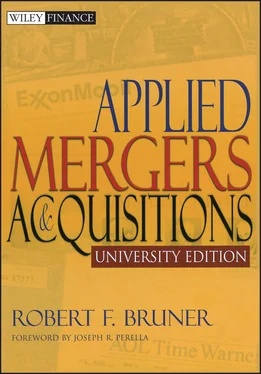EXHIBIT 5.6 Factors Explaining Equity Returns in Emerging and Developed Markets
|
Investments in Emerging Markets |
Investments in Developed Markets |
| Stock-specific factors |
16% |
22% |
| Industry factors |
38% |
48% |
| Country factors |
46% |
30% |
| Total |
100% |
100% |
Source of data: Marber (1998), page 172.
Exploit Differences in Capital Market and Currency Conditions
One of the most reliable findings about M&A activity in the U.S. is the strong relationship between deal doing and high stock and bond prices. In the cross-border world, a strong relationship also exists though it is complicated by the fact that it is driven by comparative differences between two local financial markets. Feliciano and Lipsey (2002) found that acquisitions of U.S. firms by foreign firms decline with high U.S. stock prices, high industry profitability, and high industry growth, and increase with high U.S. interest rates, high U.S. growth rates, and high foreign currencies relative to the U.S. dollar. Vasconcellos et al. (1990) found that foreign firms increase their acquisitions in the United States when U.S. economic conditions are favorable compared to the foreign country, interest rates are high in the foreign country compared to the United States, and the dollar is weak relative to the foreign currency. Gonzalez, Vasconcellos, and Kish (1998) found that undervalued U.S. companies were more likely to be targets of acquisition by foreign companies.
Closely related to capital market conditions are currency market conditions. Variation in exchange rates can render one country’s firms cheaper or dearer to buyers from another country. But conventional economic analysis would reject this, arguing that in an integrated global market, real rates of return on assets will be equal across countries, preventing profitable arbitrage on the basis of currency exchange rate variations. Froot and Stein (1991) linked currency changes to the relative wealth of buyers to argue, in effect, that countries with deep financial pockets because of strong currencies will tend to originate foreign direct investment. They find a strong relationship between exchange rate movements and FDI. Harris and Ravenscraft (1991) found a strong relationship between exchange rate movements and cross-border acquisition announcement effects. Vasconcellos and Kish (1998) reported a strong relationship between acquisition activity and exchange rate movements. Vasconcellos, Madura, and Kish (1990) concluded, “In the final analysis, the long-run outlook on the dollar is the critical factor in foreign acquisition of or by U.S. firms.” (Page 184)
Good governance pays, a point discussed in Chapter 26. Corporate governance practices vary significantly across countries. Researchers have examined whether M&A changes in investor protection stemming from these cross-border differences influence merger outcomes. Bris and Cabolis (2002) studied the change in investor protection arising from cross-country deals. They found that the valuation multiples (Tobin’s Q 17 ) in the home market rise when a foreign firm buys into that industry, coming from a country with greater investor protection. Rossi and Volpin (2001) suggest that M&A is a means by which companies can exit from a poor governance environment. Companies from countries with poorer governance practices are more likely to be acquired; those with stronger governance are more likely to buy.
Other Drivers of M&A Activity
Biswas et al. (1997) list a range of other possible motives for cross border acquisitions. These include regulatory avoidance, financing, and the desire to maintain good relationships with customers who themselves may have a need for multinational delivery of goods or services.
RETURNS FROM CROSS-BORDER M&A
Does all of this activity pay? The following points highlight the findings of 17 studies regarding the abnormal returns to shareholders at the announcement of cross-border acquisitions.
Returns to targets of foreign buyers. Exhibit 5.7shows that returns to target shareholders are significantly positive. Two studies report that U.S. targets receive materially higher returns than do foreign targets. In five studies, returns of U.S. targets are higher with foreign buyers than domestic buyers. One study, by Dewenter (1995) yields the provocative suggestion that the difference in results between U.S. and foreign buyers could be due to differences in industrial profiles of the two groups of acquisitions—much more research is required here. Cross-sectional analyses suggest that returns to targets vary significantly by country, industry, and currency rates.
Returns to buyers of foreign targets. Exhibit 5.8shows that returns to buyer shareholders are essentially zero. In four studies, U.S. buyers of foreign targets earn returns insignificantly different from zero. In 12 studies of returns to foreign buyers, one reports significantly negative returns, two report significantly positive returns, and the rest report returns insignificantly different from zero.
Joint wealth changes to buyers and targets. Exhibit 5.9summarizes three studies that report positive joint wealth gains (two of them are significant) to shareholders of buyers and targets.
The total picture appears to be that cross-border M&A does pay. Consistent with the findings for U.S. domestic M&A reported in Chapter 3, targets earn large returns; buyers essentially break even; and on a combined basis, shareholders gain. We are left with the general impression that foreign bidders pay more than domestic bidders. Kohers and Kohers (2001) have argued that this premium represents payment for special local knowledge and market access that the target provides the foreign buyer.
EXHIBIT 5.7 Returns to Targets of Foreign Buyers
| Study |
Cumulative Abnormal Returns (% or avg$/acq) |
Sample Size |
Sample Period |
Event Window (Days) |
Notes |
| Conn, Connell (1990) |
0.1822 *non-U.S. (DMM) 0.1984 *non-U.S. (IMM) 0.3986 *U.S. (DMM) 0.4331 *U.S. (IMM) |
73 |
1971–1980 |
–1,0 |
“Non-U.S.” and “U.S.” indicate country of target firm. “IMM” indicates returns estimated using a market model with an international market index. “DMM” uses a domestic market index. |
| Biswas et al. (1997) |
0.0623 *all observations |
81 |
1977–1987 |
–1,0 |
Focus is non-U.S. targets and financial sector deals. |
|
0.0350 *non-U.S. |
33 |
|
|
|
|
0.0752 *U.S. only |
48 |
|
|
|
|
0.1069 *U.S. domestic |
N/A |
|
|
|
| Wansley et al. (1983) |
0.3864 *target of foreign buyer |
39 |
1970–1978 |
–40,0 |
Focus is U.S. targets. |
|
0.2800 *target of U.S. buyer Difference is significant at 5% level. |
164 |
|
|
|
| Shaked et al. (1991) |
0.168 *foreign buyer |
29 |
1980–1983 |
–1,0 |
Focus is U.S. targets. |
|
0.148 *domestic buyer Difference is significant in oils, mining, and machinery. |
82 |
|
|
|
| Harris, Ravenscraft (1991) |
0.397 *foreign buyers |
1,273 |
1970–1987 |
–5,0 |
Focus is U.S. targets. |
|
0.263 *U.S. buyers |
|
|
|
|
| Marr et al. (1993) |
0.1182 *foreign buyers 0.0627 *U.S. buyers Difference is significant at 5% level. |
96 |
1975–1987 |
–1,0 |
Focus is U.S. targets. |
| Kang (1993) |
0.0907 *Japanese buyers 0.0684 U.S. buyers Difference is not significant. |
102 |
1975–1988 |
–1,0 |
Focus is U.S. targets. |
| Pettway, Sicherman, Speiss, (1993) |
0.3700 † |
10 |
1981–1991 |
–1,0 |
Focus is U.S. targets of Japanese buyers. |
| Servaes, Zenner (1994) |
0.3802 *1979–1980 0.1520 *1981–1986 0.4161 *1987–1988 |
779 |
1979–1988 |
N/A |
Focus is U.S. targets. |
| Dewenter (1995) |
Domestic acquisition premium is not significantly different from foreign acquisition premium. |
294 |
1978–1989 |
N/A |
Focus is U.S. targets. Looked at premiums unique to two industries, chemicals and retailing. Argued that observed differences in other studies were due to industry composition of samples. |
| Eun, Kolodny, Scheraga (1996) |
0.3702 *all observations 0.3715 *Canadian buyers 0.4855 *Japanese buyers 0.3555 *U.K. buyers’ 0.3530 *all other buyers |
213 |
1979–1990 |
–5,0 |
Focus is U.S. targets. |
| Kiymaz, Mukherjee (2000) |
Strong effects of currency and relative GNP growth rates of two countries. |
141 |
1982–1991 |
–1,0 |
Focus is U.S. targets. |
| Kuipers, Miller, Patel (2003) |
+23.07% †$121.86 MM † |
181 |
1982–1991 |
–1,0 |
Focus is U.S. targets. |
*Significant at the 95 percent confidence level.
Читать дальше












